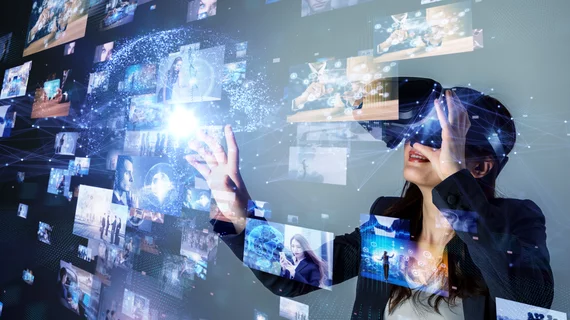Can VR play a valuable role in medical imaging training?
Students can use virtual reality (VR) training to learn about radiographic hand positioning skills, according to a new study published in Radiography. How would this compare to other training techniques?
Simulated learning environments (SLEs) are often used in medical imaging training, the authors explained, and VR engines could represent a significant step forward for such exercises. The study’s authors wanted to track what the students think of VR-powered training after trying it out for themselves.
The research included 76 undergraduate students in their first year of training. While one group (Group 1) used advanced VR software to learn more about radiographic hand positioning, the remaining trainees (Group 2) used the more traditional technique of clinical roleplaying. Participants completed their training activities and then answered a questionnaire about their experience.
Overall, there was “no significant difference between the two simulation modalities” when it came to mean agreement scores. More students from Group 1 (20) than from Group 2 (12) reported that “engagement with the learning environment” was something they most enjoyed about their training. Another key difference, the authors added, was that the “repetition afforded by the VR simulation” was viewed as a benefit by the students.
Also, the students in Group 1 had a higher “perceived improvement of clinical positioning and radiography skills” (71%) than students from Group 2 (47%).
“This finding demonstrated that students who utilized the immersive software perceived themselves to have better radiographic positioning and technique than for the non-immersive software,” wrote lead author Daniel Sapkaroski, department of medical imaging and radiation sciences at Monash University in Australia, and colleagues.
One limitation, according to the researchers, is that student perspective may change as the trainees advance in their training. In addition, “future studies should compare a wider range of roleplay scenarios” instead of just hand positioning.

